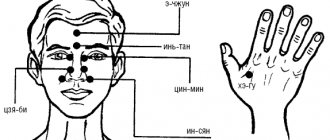People have always been wary of any extraordinary events that occur during the full moon. What can we say about relatives or neighbors wandering around at night in a state of deep sleep! Naturally, they frightened the ignorant; in the Middle Ages, situations even reached the point of burning lunatics at the stake.
Today, sleepwalking can also hardly be called fully studied, but science knows much more facts about it.
What is sleepwalking?
Firstly, it has been established that people sleepwalk not only during the full moon. The problem is not the moon, but the disruption of sleep processes caused by disruptions of the nervous system. And therefore it is correct to call sleepwalking “somnambulism” or “sleepwalking.”
The word comes from two Latin words: “somnus” (sleep) and “ambulo” (to move around). Those suffering from this disease are called “somnambulists.”
Secondly, it turned out that the phenomenon is quite common. Approximately 15% of humanity faces the problem of sleepwalking.
Causes of disorder in minors
It is known that sleepwalking most often occurs in children and puberty. Male individuals are more susceptible to it.
The pathology is associated with insufficient maturity of the central nervous system in children and adolescents. Increased mental and emotional stress, active activities (watching TV shows, computer games) in the evening - all this leads to the fact that the nervous system cannot calm down even during sleep.
Often somnambulism is combined with involuntary loss of urine, tics, and neurosis. In addition, one of the answers to the question of why people sleepwalk at night is the presence of a hereditary predisposition
. If the disorder was observed in relatives, then there is a possibility of its development in the child.
Somnambulism often occurs in children and adolescents during a migraine attack, during illnesses that are accompanied by an increase in temperature. Another possible cause of the disease is epilepsy.
What are the signs and symptoms of it?
The main manifestation of sleepwalking is unconscious sleepwalking. During sleep, a person suddenly gets up and begins to perform some actions. From the outside they may look quite adequate, but in fact they are connected with the fact that the sleepwalker is dreaming at this time.
He can just sit on the bed and sit for a while, or he can get up, turn on the light, and go somewhere. Sometimes a person suffering from somnambulism goes out into the yard, into the entrance, or onto the street. The eyes of a sleepwalker are wide open, but the gaze is detached, the pupils are narrowed, the face does not express emotions, the movements are leisurely and smooth.
Sometimes somnambulism also manifests itself in sleep-speaking - a person can talk to himself in his sleep or even carry on a simple conversation with an interlocutor.
The child talks and walks in his sleep, what should I do?
All of the above also applies to cases when children walk in their sleep.
.
What should
parents do? Of course, sleepwalking, somnambulism, and sleepwalking are a deeper disorder of normal sleep, and often require special treatment with sedatives.
All kinds of nervous shocks (fear, grief, resentment) at any age can contribute to sleep disorders. However, sleepwalking is usually not associated with nervous shocks in the past: this disorder most likely has genetic causes.
In all such cases, you need to show the child to the doctor, make sure that he is physically healthy (there is no hidden illness or worms), and try to provide the child with the correct, healthy regimen: good nutrition, sufficient exercise in the fresh air, quiet hours in the evening before bedtime. You need to sleep in complete darkness, silence and relative coolness - 14-15 degrees Celsius. The room should be at least slightly but continuously ventilated: open the window slightly.
Physiological mechanism of sleepwalking
All researchers of the phenomenon of sleepwalking agree on the mechanism of its manifestation.
It is believed that when a person sleepwalks, the following physiological process occurs in the body: there is a malfunction in the functioning of special active chemicals - neurotransmitters. They are designed to transmit an electrochemical signal from nerve cells to muscle cells and other parts of the body.
As a result of their failure, the central nervous system of a sleeping person is not able to control all areas of the brain. This means that not all of them can be inhibited. Some of its departments responsible for movement remain partially active.
This is why a sleeping person can move, but not be aware of what is happening: consciousness is asleep, but motor skills are not.
Justified by the Moon
During an attack of somnambulism, a person can not only walk and talk, but also perform other actions that are not always legal. The phenomenon of sleepwalking killers has been known since the 14th century.
.
Back in 1313, the council of the city of Vienne (France) issued a decree stating that a sleeping person who killed someone or simply caused injury was not considered guilty. One of the Spanish legal treatises of the 15th century mentions “deadly sleepwalking, examples of which are well known in England
.
That is, as you can understand, the problem of illegal actions taken by lunatics has been facing humanity for a long time. This phenomenon is especially interesting from a legal perspective
. Considering that sleepwalking is an altered state of consciousness in which a person cannot control his actions, long legal battles have more than once led to the acquittal of sleepwalkers.
The first somnambulist murderer released from custody was Colonel Cheney Culpepper of the Royal English Army. While sleeping, he killed one of the soldiers with a blunderbuss
.
It is significant that the court pronounced a guilty verdict, but King James II pardoned the murderer. The first American acquitted of murder in his sleep was Albert Tyrrell. He distinguished himself by not only killing a prostitute in his sleep, but after that he also burned down the brothel
.
Despite the seriousness of the offense, the sleepwalking criminal was acquitted. Willis Boshiers, an American sergeant, was acquitted after not only killing the girl he returned from the pub with, but also hiding the girl's body in his sleep. Although this looked like a deliberate act to hide the body, the court acquitted Boshirs.
Of course, the unconscious crimes of lunatics are not limited to murders alone .
There are also almost comical cases
.
So, guitarist of the band REM
.
In 2001, Peter Buck managed to fight with flight attendants in his sleep over yogurt and tried to stuff a CD into a food cart. At the trial, the musician claimed that he did all this in his sleep
. It was difficult to prove otherwise, especially since the name of the group stands for “slow sleep phase.” Here, as they say, you can’t find fault.
Lunatic politicians also find themselves in bad situations. Thus, John Kennedy’s nephew, Congressman Patrick Kennedy, crashed his car into the Capitol fence at full speed in 2006
.
Patrick told the cops who arrived at the scene and the onlookers loitering around Washington at night that he was in a hurry to vote
. He did all this in a dream and did not remember how he ended up behind the wheel. The court recognized the politician's somnambulism and sent him to a clinic for treatment.
For what reasons can sleepwalking occur?
What can cause such disruptions in the functioning of nerve impulses? The causes and provocateurs of this pathology are numerous and have not yet been fully studied.
Hypercapnia
One of the most modern versions explaining the causes of sleepwalking sounds like this: sleepwalking is caused by an excess of carbon dioxide in the blood. In medicine, this effect is called hypercapnia, it is provoked by snoring or sleep apnea (stopping breathing).
The bottom line is that with snoring or obstructive sleep apnea, breathing movements temporarily stop during sleep. Thus, the removal of carbon dioxide and the flow of oxygen into the blood stops. Changing the correct balance of these substances affects certain parts of the brain, special hormonal releases occur that excite the motor centers of the body.
Simply put, the brain reacts to a sharp lack of oxygen and tries to “wake up” a person. The emphasis is on motor functions so that breathing can be restored faster. The remaining centers of the nervous system remain in a state of inhibition, that is, they continue to sleep.
Strong impressionability
Very often, symptoms of somnambulism are observed in people who do not suffer from snoring or apnea. Somnologists (scientists who study sleep problems) and psychologists agree that sleepwalking can also be caused by severe overexcitation. This is especially often observed in children, since their nervous system is not yet formed and their psyche is not strong.
Sleepwalking in childhood can be caused by an incorrect daily routine, nightmares, and severe overexcitation immediately before bedtime (active games, training, intellectual fatigue). Stressful events in the family or child care facility are also strong triggers.
There have been cases where children began to sleepwalk as a result of their parents’ divorce, the loss of a loved one, or other dramatic events in their lives. Moreover, sleepwalking could persist for many years even after an apparent exit from a traumatic situation.
You should also not raise children through intimidation, even minor ones. Traditional and innocent, at first glance, fairy tales and scares about “babaika” or other “horror stories” can cause nightmares, cause a state of overexcitation and provoke sleepwalking.
Adults are less likely to experience somnambulism due to overexcitation, but it can also develop in them due to severe or chronic stress, as well as due to a general impressionability of nature.
Sometimes attacks can be triggered by taking certain medications that affect the emotional state. These could even be the usual sedatives (calming) or antihistamines (anti-allergic) drugs.
Intoxication
Another provocateur of sleepwalking is considered to be intoxication of the body.
Cases of sleepwalking can be caused by toxic substances entering the bloodstream due to:
- alcohol or drug intoxication, taking energy drinks;
- terminal stage of helminthiasis (when waste products of worms or other helminths lead to poisoning of the body);
- intoxication during pregnancy;
- suffered neuroinfection due to prolonged intoxication of the body;
- other types of poisoning.
Psychoneurological and other disorders
Special attention from specialists is required in cases where sleepwalking is caused by serious illnesses, consequences of traumatic brain injury or psychiatric illnesses - hysterical neuroses, split personality, schizophrenia, panic attacks and even habitual depression.
Somnambulism is often a symptom of epilepsy. At the same time, sleepwalking can be both a consequence and a harbinger of this disease, manifesting itself several years before its first signs.
Some illnesses that prevent you from getting a good night's rest can trigger episodes of sleepwalking.
These include, for example:
- hyperthyroidism,
- migraine,
- various disorders of the gastrointestinal tract.
Heredity
More recently, it was discovered that the tendency to somnambulism can be inherited.
The research statistics are as follows:
- more than 60% of children suffered from the disease if both parents had such a problem in childhood,
- more than 47% of children - in the case of only one sleepwalker among the parents.
Inheritance does not always come directly from dad or mom. That is, if there were somnambulists in the family or clan, then the child is at risk. In these cases, according to scientists, the person sleepwalks without any provoking factors, and, as a rule, the symptom goes away by itself by adolescence.
Can this be somehow cured?
If this bothers you for quite a long time or you feel a sense of fear and anxiety, it is recommended to consult a doctor. The specialist, in turn, will ask you a number of questions and perhaps conduct a simple test. After that, build a treatment plan.
In addition to the actions of the doctor, you can also help yourself in this matter. For example, as an alternative solution, you can keep a diary where, with the help of your family, you will write down the days and approximate time of manifestation of somniloquy.
Observe your body, try to independently determine what exactly you had such a reaction to. Keep track of the time you go to bed and the medications you took before bed. Perhaps you drank coffee or other invigorating drinks? Or maybe they were just involved in active sports? In any case, this will allow you to solve this problem on your own.
In ancient times, people believed that the Moon influences not only the tides of the sea, but also the human psyche, and it is this night star that makes some people get out of their beds at night and walk in their sleep. Therefore, in the past, healers called the phenomenon of sleepwalking sleepwalking. But the influence of the Moon is one of the most harmless reasons that were used in ancient times to explain sleepwalking, because in the dark Middle Ages, sleepwalkers were often declared witches or possessed. Fortunately, now the times of the Inquisition and ignorance are a thing of the past, and modern scientists have studied sleepwalking in detail, identified its causes and ways to help the sleepwalker. Let's take a closer look at exactly what signs characterize sleepwalking, why people sleepwalk at night, and how to save yourself or a loved one from night walks.
Should sleepwalkers be woken up during sleep?
The opinions of experts on this matter vary radically from: “you should under no circumstances wake up sleepwalkers” to “of course, it is possible and necessary.”
They agree on one thing: since there is a risk of physical harm to the sleepwalker himself or those around him (very rarely), one should carefully and carefully try to return him to bed. At the same time, he may wake up, or maybe not. In any case, it is important that the awakening is gentle and non-stressful.
Is sleepwalking recognized by modern medicine?
According to science, sleepwalking is correctly called somnambulism, and it should be understood as only one type of sleep disorder. It occurs in the deep stage of slow-wave sleep and can last for 30 seconds or even 30 minutes. But it happens that people walk around at night in a state of somnambulism for several hours at a time.
From a physiological point of view, somnambulism is an incomplete awakening, when one part of the brain wakes up while the other continues to be asleep. Therefore, all the actions that sleepwalkers perform are usually unconscious and not always rational (for example, sometimes they climb onto the roofs of houses, exposing themselves to mortal danger).
How to help a sleepwalker?
First of all, the relatives of such a person must take care to protect him from various possible injuries. It is recommended to install strong bars on the bedroom windows. Electrical wires and glass objects must not be left on the floor. Otherwise, the sleepwalker may be seriously injured by tripping over them.
In the case of severe forms of sleepwalking, the person suffering from it can even be tied to a bed. Care must also be taken to ensure that the sleepwalker cannot open the front door and leave the house. Some people place a basin of water in front of the sleepwalker’s bed, and once he gets into it, he immediately wakes up. You can put a wet rag.
All these measures will help protect him from negative consequences.
It is very useful to relax before bed by listening to pleasant, calm music. It is necessary to follow a strict sleep schedule and try not to disturb it. You need to fall asleep in complete silence. Before going to bed, be sure to empty your bladder.
You can’t wake up a sleepwalker, but you need to help him get to bed. This should be done slowly and calmly so as not to scare him.
Dear readers, please do not forget to subscribe to our channel at
Somnambulism (sleepwalking, sleepwalking) - (from Latin somnus
- sleep and
ambulo
- walking, wandering) - sleepwalking, a painful state expressed in unconscious, outwardly ordered, sometimes ridiculous or dangerous actions.
Sleepwalking usually occurs during incomplete awakening from a deep phase of slow-wave sleep, while the brain is in a state of half-sleep, half-awake. It doesn’t seem strange to us that a person walks and talks during the day, but it is surprising that a person can do the same thing in his sleep...
Sleepwalking is called somnambulism in medical literature, and sleepwalking in common parlance. Mentions of somnambulists are found in Egyptian papyri and the works of Greek philosophers and poets. The mystical aura that surrounded somnambulists gave rise to the very name of the phenomenon - sleepwalking.
It was believed that the gentle shine of the night luminary changes the human psyche and the full moon is the time of Sabbaths and nervous breakdowns. So from the Latin word luna (moon) lunaticus (mad) was formed. And, despite the fact that the more delicate term “somnambulism” was later adopted, the stamp of madmen does not intend to go away from sleepwalkers.
In medieval Europe, sleepwalking was seen as otherworldly manifestations and it was believed that it was women who suffered from it. Witch hunts were very popular back then, and female lunatics were charged with witchcraft and black magic, for which at that time they could be burned at the stake or drowned. The famous manual for the Inquisition - “The Hammer of the Witches” - considered somnambulism as a person’s possession by an unclean spirit and recommended dealing with it accordingly. So the families of the unfortunate sleepwalkers, or rather sleepwalkers, tried to keep them under constant supervision and not let them out into the street, even if the night was completely moonless.
Somnambulism is a fairly common phenomenon. About 2% of all people periodically sleepwalk. A rare aggressive form of sleepwalking can take an unpredictable turn. A sleepwalker can be violent towards people who are trying to help him or who simply get in his way.
The University of Washington tested a theory that suggested sleepwalking was a genetic disorder. According to the researchers, they were able to find a section of DNA responsible for the tendency to develop somnambulism, BBC reports with reference to a publication in the journal Neurology. Four generations of one family took part in the study - a total of 22 people, 9 of whom suffered from sleepwalking.
The most common occurrence was unconscious night walks, which often resulted in broken limbs. And one man managed to put on eight pairs of socks without waking up. Having analyzed DNA obtained from the saliva of somnambulists and their relatives, experts discovered a specific region on chromosome 20 (locus 20q12-q13.12), the presence of a single copy of which in the genome predicted with a 50% probability that a person would become a sleepwalker.
Now scientists are studying which of the 28 genes included in this region is the “culprit” for the development of the disease. The greatest suspicion falls on the adenosine deaminase gene, which is responsible for the production of the corresponding enzyme. This enzyme, in turn, is responsible for the slow-wave sleep phase, in which, as is known, sleepwalking occurs. The famous Russian doctor, Nobel laureate in medicine and physiology Ilya Mechnikov in his book “Studies of Optimism” (1907) describes many examples of the “classical” sleepwalker.
Here's one of them. At the Laennec hospital in Paris, a nervous 24-year-old girl was admitted as a nurse. One Sunday the young lady was unwell. At one in the morning the girl got up and, going up the stairs, opened the attic window, climbed out and walked along the edge of the roof. After which she returned... “At this moment we see her,” said the doctor on duty, “she walks silently, her movements are automatic, her arms hang along her slightly inclined body; the girl holds her head straight and motionless; her hair is loose, her eyes are wide open. She looks absolutely like a fantastic ghost.”
Laboratory studies have shown that sleepwalking attacks in people usually occur during the slow-wave sleep phase. For a number of reasons (which scientists have yet to thoroughly understand), inhibition of the central nervous system in sleepwalkers does not occur completely during this period. The areas of the brain responsible for movement are insidiously awake, which allows the sleepwalker to take a walk without waking up.
The sense organs responsible for vision and touch are also vigilant with it. Thanks to them, the somnambulist wanders without bumping into objects. But the feeling of fear is dulled, and there is a risk of coming to a dangerous place. Memories of nighttime “excursions” are not retained the next morning, as does involuntary urination, which is characteristic of sleepwalkers. There are many legends associated with the phenomenon of sleepwalking: it is considered a sign of madness; they say that it is dangerous to wake up a sleepwalker and that he is acutely aware of danger and cannot harm himself. None of this is true.
Somnambulism is by no means a sign of madness; It is very difficult to wake up a sleepwalker - it is better to carefully guide him back to bed; about 25% of sleepwalkers cause various injuries to themselves during night wanderings. It happens that somnambulists fall out of windows, mistaking them for doors.
Sometimes you hear stories about how people drove cars, flew airplanes and performed other complex activities while in a state of somnambulism. In fact, this is unlikely. Although, being in a state of confusion, a somnambulist is able to get into a car and start the engine, he will not be able to drive it normally due to the lack of fast reflexes at such moments - an accident will immediately occur.
It is well known that people spend about a third of their lives sleeping. During this time, they forget about daytime activities and do not go to work, visit or go for a walk. But sleepwalkers manage to walk in their sleep with ease. What forces lift a person from the calm of his bed at night? Where does his “monkey” essence come from in this state, giving rise to unusual dexterity and mobility?
There are many interesting versions of why sleepwalkers, among whom were such bright personalities as, for example, Johann Goethe and Wolf Messing, Anna Akhmatova and Vladimir Vernadsky, take a step from sleep into reality. Abbot Etienne Bonneau de Condillac, French philosopher and educator of the 18th century. and the author of the famous “Treatise on Sensations”, often worked in a state of sleep. This is how he wrote some chapters of his works. And, considering that Condillac is a major link in world philosophy and one of the recognized fathers of the theory of sensory knowledge of the world, he succeeded quite well.
There are a large number of theories explaining the phenomenon of somnambulism and here are some of them: . The exit of the second "I"
According to the descriptions of eyewitnesses, a sleepwalker during sleepwalking is completely unlike himself, and is also capable of actions that he would not perform in a normal state.
For example, a case is described when an elderly somnambulist got out of bed at night and, straightening his eternally stooped back, went to saddle a horse with gymnastic agility, which he was not capable of even 20 years ago. It was as if someone young and alien had taken possession of him.
The German philosopher Gottfried Leibniz once said: “If we could admit that two different consciousnesses act alternately in the same body, one during the day and the other at night, then do not the “man of the day” and the “man of the night” represent the same two different personalities like Socrates and Plato?
The assumption of the great thinker of the 17th century. finds confirmation. Mechnikov spoke about paradoxical cases of real split personality of somnambulists in his medical notes. He gave examples of how patients live in two different consciousnesses, and one has not the slightest idea of what is happening to the other. For example, one woman started talking about her pregnancy during an attack of sleepwalking and this, of course, was not surprising. Except for one thing: in reality, the lady did not know about her situation, despite the fact that she spoke freely about it when she fell into a somnambulistic state. According to the observations of the famous doctor, the human consciousness during sleepwalking is capable of living independently. Not a day, not two or three. For months!
Doesn't this mean that sleepwalking is a certain channel that the hidden sides of the personality have chosen to come out into the wild? And no one knows whether the second, night “I” is good...
Cosmic hypnosis Often, somnambulistic sleep is compared to trance and a state of hypnosis. These two anomalies are very similar, and it is no wonder that there is even the term “artificial somnambulism” (hypnotic sleep). This theory was actively defended by the Russian scientist Ivan Pavlov. However, even the great physiologist would not have found an explanation for the reports of eyewitnesses of natural somnambulism: sleepwalkers walk with their eyes fixed on the night sky, and seem to receive invisible signals from it. Who is hypnotizing these unfortunate people? It is possible that mysterious commands from space force the somnambulist to rise as high as possible and wait for aliens from alien planets to come for him.
. Health problems
Less mystical speculation about the causes of sleepwalking lies behind the walls of hospital wards. In medical terms, sleepwalking can occur due to neurological changes in the human brain, including neurasthenia, hysteria and epilepsy. This is precisely why children sleepwalk most often, and adults much less frequently. Isolated cases of walking in their sleep were recorded in the outpatient records of 18% of children aged 5 to 12 years. Almost 6% of children walk at night regularly.
. The influence of moonlight
There is no arguing that the Moon has special power over nature. This modest-sized and seemingly fragile satellite of the Earth causes the ebb and flow of the seas, thereby reigning over the elements. The moon controls the biorhythms of all living things. The powerful effect of the night light on the human body has long been noticed. The lunar cycle is divided into two parts, approximately 14 days each: the periods of the waxing month (from new moon to full moon) and the waning month (from full moon to new moon).
When the lunar crescent grows and becomes fuller, a person is energetic and active. As the moon wanes, our vitality weakens and fatigue sets in. Perhaps the phases of the moon would flow into one another imperceptibly if not for one single day - the full moon. On the night when we see the Moon huge, bright and yellow, nature is saturated with special energy and the most diverse manifestations of life reach their peak of activity.
So, for people who have bad nerves, the full moon can be a difficult, literally crisis period. The pressure of fluids in the body increases. And, considering that our body consists of 70-80% liquid, those who suffer from high blood pressure are threatened with headaches by the full moon, and those who complain of insomnia sometimes have to forget about sleep altogether.
Having become saturated with lunar energy, the human brain begins to work unusually. This may be the reason why somnambulists begin their walks during the full moon. However, the final explanation for the origin of the phenomenon of sleepwalking is still hidden in the darkness of the night...
Sleepwalking is a rather rare disorder that manifests itself in people both during critical, stressful and ordinary periods of life, sometimes lasting for years. How to recognize sleepwalking in a loved one and is there a treatment for this restless syndrome?
Why can’t we ignore the “travels” of sleepwalkers?
Don't ignore sleepwalking in yourself and your loved ones, as night walks can cause falls and serious injuries. People who sleepwalk may even leave home and go to an unknown direction, after which it takes a long time to find them.
To protect a person suffering from sleepwalking, it is recommended:
- remove all sharp and potentially dangerous objects from the room where he sleeps, including pens, knives and guns, carpets and random wires;
- every evening, lock the room in which the sleepwalker sleeps, or install a special alarm on the door that will wake him up;
- allocate a bedroom on the first floor for the sleepwalker to eliminate the possibility of using the stairs;
- turn off the water and gas at night so that the sleepwalker does not open the taps or turn on the gas stove;
- turn off all household appliances so that the sleepwalker cannot use them (microwave, toaster);
- install bars on the windows of the house to prevent the sleepwalker from jumping out of the window.
If somnambulism torments you every night and prevents you from getting enough sleep, you should consult a therapist or neurologist. Currently, there is no single effective treatment for this sleep disorder, but doctors will be able to prescribe additional examinations to the patient and find out the possible causes of this problem.
If you suspect that the cause of somnambulism is psychological problems, visit a psychologist or psychiatrist.
Symptoms of sleepwalking
Sleepwalking in the literal sense of the word means “walking in a dream,” but this is not the only example of the behavior of a somnambulist. Often, those suffering from this disease may simply sit on the edge of the bed or perform some activity. Sometimes it looks like conscious movements. In this state, the patient's eyes are open, but the eyeballs remain motionless. The walking session itself lasts several minutes, after which the person goes back to bed and sleep continues. Sometimes there are times when a somnambulist gets out of bed and begins to move around all the rooms in the house. As a rule, this is walking without a goal. At this time, the patient’s face does not have any special expression, drooping arms are located at the sides, and the body is tilted forward. Walking occurs in small steps. In an advanced state of the disease, a person can perform various complex actions - put on clothes, open a closet, the front door or even a window, and then continue moving on the balcony or eaves of the house.
We recommend reading! Click on the link:
Why does a child sleepwalk in his sleep and what to do about it
Regardless of what form of the disease is observed at the moment, the signs of sleepwalking are usually identical and are indicators for diagnosis.
These include:
- Lack of clear consciousness.
- Open eyes and motionless eyelids.
- Emotional state.
- Sound sleep after falling asleep again.
- Lack of memories the morning after walking.
Lack of clear consciousness - while walking in a dream, the patient is able to perform various, sometimes even very dexterous actions, but all his movements are unconscious and performed automatically. Consciousness is also turned off at this time. That is why it is better not to communicate with a sleepwalker and not to make sudden attempts to bring him back to consciousness. In this state, he is unable to understand what is happening to him, will not answer questions, and does not realize the danger of his actions. Despite the fact that the movements are not conscious and the body is relaxed, the somnambulist is capable of causing harm to himself or others. If a person walking in a dream is abruptly awakened, this can lead to dire consequences.
Open eyes and motionless eyelids - a person will always have their eyes open during a walking session. This way, even a layman will be able to distinguish a real episode of sleepwalking from a simulation. A somnambulist's gaze is always focused, the pupils are motionless. If you try to stand face to face, or show a person any photo, you will see that the gaze is directed as if “through” your body.
Emotionless state - in episodes of sleepwalking, a person is not able to control his brain, therefore, no emotions occur. The face of a somnambulist is always detached and emotionless; it expresses neither danger, nor worries, nor joy.
Sound sleep after an episode of sleepwalking - this is how any sleepwalking ends. After a certain set of actions, a person either returns to his bed or takes any convenient place closest to him. If the somnambulist is guided to bed with gentle movements, sleep is not disturbed, and the patient falls asleep even more soundly. By the way, the only way to wake him up during an episode is to inflict pain, for example, by pinching him painfully or sharply pricking him with something sharp. Otherwise, the sleepwalker simply does not respond to words or attempts to wake himself up. After waking up in a vertical position, a person does not understand for a long time where he is at the moment and how he got here. However, after some time, consciousness returns to normal, but he does not remember the episode of walking.
The absence of any memories - walking at night and subsequent sleep until the morning ends in complete amnesia. Since the patient's brain was in a relaxed state, actions that occur at night are not stored in memory. All attempts to remind him of his night behavior are taken as a joke.
Egypt and the Witches Hammer
Somnambulism has haunted people since ancient times. He is mentioned in the Bible; in the Gospel of Matthew (chapter 17, verses 14, 15) we read: “...a man came up to Him and, kneeling before Him, said: Lord! have mercy on my son; On new moons he goes berserk and suffers greatly, for he often throws himself into fire and often into water.”
For a long time it was believed that sleepwalking was a sign of demon possession. Moreover, until the 17th century in Europe they generally thought that only women were susceptible to somnambulism. In the Middle Ages, such women were even recognized as witches. In “The Witches’ Hammer” one can find the following unambiguous assessments of sleepwalking: “So, for example, people called sleepwalkers are tormented by demons at certain periods of time more than at others. Demons could not do this if they themselves, depending on the phases of the moon, were not predisposed to this.” With the development of medicine, attitudes towards sleepwalkers also changed. The most prominent medical minds studied this symptom. For example, Nobel Prize laureate Ilya Ilyich Mechnikov.












